Midweek Review
JRJ’s racism, cold war posturing and the Indian debacle
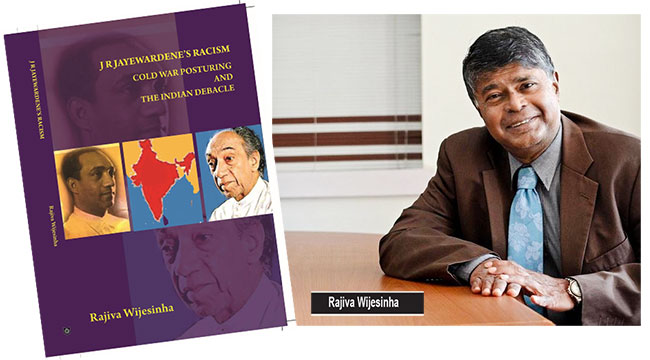
New biography:
In addition to his political biography of J R Jayewardene, Godage & Bros published last month another book of travel by Rajiva Wijesinha. Around and About the Mediterranean covers journeys over half a century to Southern Europe, Northern Africa, and the Levant from Jordan up to Turkey. It also includes travel to the Balkans, Yugoslavia in 1972 and then the separate countries of the former Yugoslavia in the last five years.
Bringing together the Classical and the Christian and the Islamic cultures of the region makes for a fascinating read for it shows the intermingling that has made the Mediterranean so productive of ideas as well as artefacts. In addition, the book shares with readers the sheer joy of travel, the wonders seen and the pleasure of strenuous exploring followed by relaxation in scenic surroundings. There are several colour pictures as well as black and white ones to illustrate each section.
By Shamindra Ferdinando
An opportunity to peruse Prof. Rajiva Wijesinha’s critical biography of Sri Lanka’s first executive President (not elected), titled ‘J.R. JAYEWARDENE’S RACISM, COLD WAR POSTURING AND THE INDIAN DEBACLE’, couldn’t have been received at a better time.
The country is in turmoil with a wave of protests, with farmers’ now leading the way over the SLPP government agricultural policy, a simmering dispute with China regarding a ship carrying allegedly contaminated carbonic fertiliser consignment entering Sri Lankan waters, unprecedented balance of payment crisis, and a deepening disagreement with SLPP constituents over a deal with the US company New Fortress Energy, as well as foreign policy issues.
Can Sri Lanka’s current predicament be blamed on the executive presidential system, failure on the part of Parliament and the judiciary – the three pillars on which the country’s political system is based? Academic, administrator and ex-lawmaker who had represented the utterly corrupt SLFP and UNP-led political groupings (2010-2015 in Parliament), Prof. Wijesinha has launched this devastating attack on the late UNP leader JRJ but, overall, the JRJ biography seemed an extremely harsh critique on the political setup he established. But, the irony is the author himself had been part of the two major political groupings after having performed an immensely valuable role as the Secretary General of the Secretariat for Coordinating Peace Process (SCOPP) in addition to being the Secretary to the Disaster Management and Human Rights Ministry.
The writer really appreciate an opportunity to review ‘J.R. JAYEWARDENE’S RACISM, COLD WAR POSTURING AND THE INDIAN DEBACLE’ against the backdrop of The Island celebrating its 40th anniversary at a time the country is experiencing an unprecedented financial crisis. Prof. Wijesinha has basically dealt with the period The Island and its sister paper, Divaina played a critically important role.
Before delving into Prof. Wijesinha’s quite useful analysis, it would be pertinent to mention that as a UPFA National List MP, the academic, in spite of strong opposition from a section of his Liberal Party, voted for the dictatorial 18th Amendment to the Constitution that was passed on Sept. 18, 2010. The 18th Amendment that had been brought in at the expense of the 17th, introduced during Chandrika Bandaranaike Kumaratunga’s tenure as the President, literally placed the executive, the legislature and the judiciary under the President’s thumb. The judiciary cannot absolve itself of the responsibility for protecting and nurturing the Constitution if/when the executive or Parliament violated the Constitution, or both did, simultaneously. The UPFA initiated impeachment proceedings, close on the heels of the Supreme Court having deemed actions taken against then CJ Shirani Bandaranayake constitutional. Bandaranayake was accused of financial impropriety and interfering in legal cases among other allegations- all of which she denied, but her husband was involved in some banking shenanigans and he was convicted.
Wijesinghe, as an MP, however abstained from backing the impeachment motion against then C J Bandaranayake in early January 2013. A year later, Prof. switched his allegiance to a high profile yahapalana political project, spearheaded by the late Ven. Maduluwawe Sobitha Thera and Ven. Atureliye Rathana, MP (now NL MP of Ape Jana Bala Pakshaya) that facilitated the break-up of the powerful UPFA and the emergence of long standing SLFP General Secretary Maithripala Sirisena as the Opposition presidential candidate.
With Sirisena taking over as the President in January 2015, Prof. Wijesinha received appointment as State Minister of Higher Education. However, Prof. Wijesinha resigned on Feb 17, 2015 opposing the then Premier Ranil Wickremesinghe’s move to secure executive powers for himself as the Prime Minister. Prof. Wijesinha declared the move to gazette the 19th Amendment to the Constitution and transfer of executive powers to the Prime Minister was both ill-timed and a wrong decision, thus, he could no longer be a part of the yahapalana government.
Prof. Wijesinha alleged in Parliament the transfer of executive powers to the Prime Minister was extremely dangerous when one considered the way the UNP leader was conducting himself. Prof. Wijesinha certainly didn’t receive public appreciation for shifting of allegiances from various political alliances within a very short period, first to the short-lived Sirisena–Wickemesinghe combination, and then declare support for Sirisena, at the expense of Wickremesinghe, and finally ending up with those who he abandoned in 2014. Sirisena, who led the charge against the Rajapaksas, had ended up among the same group whom he accused earlier of planning to assassinate him.
Jeyaraj’s arrest in the wake of Indo-Lanka Accord
Prof. Wijesinha dealt with how the JRJ government arrested the then The Island journalist David Buell Sabapathy Jeyaraj over the reportage of the Indian Army offensive in the Jaffna peninsula. The former parliamentarian reproduced an apt section of Jeyaraj’s report that discussed the ground situation in the peninsula. Having joined The Island, in June 1987, the writer remembers the subsequent developments that paved the way for Jeyaraj to leave for the US. The versatile writer ended up in Canada. New Delhi continuously interfered with print media coverage of the violence in the Northern and Eastern parts where the Indian Peace Keeping Force waged a bloody campaign to tame the Liberation Tigers of Tamil Eelam (LTTE) after it turned its wrath against them.
Once the Criminal Investigation Department (CID) sleuths visited The Island editorial to question Norman Palihawadana over his coverage of atrocities committed by the Indian Army in the Eastern theatre of operations. Jeyaraj left the country in Sept 1988, two years before after India ended its disastrous military mission here. The prolific writer for the first time returned to Sri Lanka in Oct 2013 – four years after the military eradicated the LTTE completely.
The section on the Provincial Council legislation, when examined with how JRJ handled the judiciary, is thought-provoking and is evidence the legislature lacks the strength to counter overwhelming executive (dictatorial) powers, regardless of opposition by some lawmakers. The resignation of the late much respected Gamani Jayasuriya over the passage of Provincial Council legislation is a case in point.
‘J.R. JAYEWARDENE’S RACISM, COLD WAR POSTURING AND THE INDIAN DEBACLE’ published by S. Godage and Brothers should be made available in the library of the Parliament .The author should consider getting the book translated to Sinhala and Tamil, too, for the benefit of lawmakers unable to make use of the JRJ biography. The writer brought the new book to the attention of the Chief Librarian of Parliament and the pivotal importance of making it available to the lawmakers, over the last weekend.
Prof. Wijesinha discussed how JRJ brazenly amended and manipulated the Constitution, suppressed internal dissent and if the dictator had his way he would have deprived Ranasinghe Premadasa of an opportunity to contest the 1989 presidential election. At the onset of his new book, Prof. Wijesinha pointed out how JRJ brought in his first amendment to the Constitution to subvert a judgment of the courts.
Corruption becomes way of life
Prof. Wijesinha boldly discussed the impact the absolutely corrupt political system in place as a result of deterioration of parliamentary norms is having on the country. The latest JRJ autobiography has contradicted those who published hagiographies of the former President. Prof. Wijesinha compared the late JRJ with Ranil Wickemesinghe whom he described as JRJ’s spiritual heir. Having referred to their strategies in dealing with Tamil speaking people, Prof. Wijesinha repeated his long standing claim of Wickremesinghe bribing SLMC leader Rauff Hakeem in 2014 to win over his support ahead of the 2015 presidential election. Wijesinha first made the accusation in a widely watched Sirasa ‘Pathikada’ programme anchored by the late Bandula Jayasekera, one-time presidential spokesman and the writer’s colleague at The Island editorial. Prof. Wijesinha says Muslim politicians continue to cross up and down, depending on what they are offered.
Prof. Wijesinha publicly alleged years before the launch of JRJ biography how the Commission to Investigate Allegations of Bribery or Corruption (CIABOC) sat on his complaint on the bribery accusation. The academic declared that the UNP received money to engineer a crossover of over a dozen People’s Alliance lawmakers in 2000 from businessman Nahil Wijesuriya.
Referring to the Rubber-Rice pact with China finalised in 1952 and the despicable role played by JRJ, Prof. Wiejsinha briefly examined the 99-year-old lease on the strategic Hambantota port in 2017. Prof. Wijesinha blamed the then President Sirisena, Premier Wickremesinghe and International Trade Minister Malik Samarawickrema for the Hambantota sell-out to varying degrees. The author quite rightly faulted an influential section of the media for continuously attacking the Rajapaksas for selling family silver to the Chinese whereas the UNP-led administration pushed through the deal.
The incumbent government has had no option but to accept the controversial Hambantota deal. Interestingly, the government is now under fire for giving into the US strategy to take over Sri Lanka’s energy security. The author of the JRJ biography may not agree with the writer, but the undeniable truth is all governments since the advent of UNP at the 1977 parliamentary election contributed to the deterioration of democracy and sovereignty. The 20th Amendment enacted in Oct 2020 with a 2/3 majority is a case in point. With the advent of the 20th Amendment, the much discussed abolition of the executive presidency or curbing of its powers will not be subject to discussion though some may make some statements opposed to the executive presidential system.
Perhaps Prof. Wijesinha should have discussed how Wickremesinghe received the premiership in January 2015 in the aftermath of Sirisena’s victory. JRJ’s political strategy has been exploited by interested parties to deceive the public that victory at the presidential election provided a mandate for them to take over the government. Sirisena and Wickremesinghe did exactly that. If not for the manipulation of the system, Wickremesinghe wouldn’t have received the premiership in January 2015. Prof. Wijesinha wouldn’t have to resign in Feb 2015 and Treasury bond scams would not have been perpetrated.
JRJ biography in three parts
The civil society, the diplomatic community, the media and the general public can benefit from Prof. Wijesinha’s incisive thinking. In part I, the author discussed (a) overview of JRJ’s political perspectives (b) Tamil parties (c) much amended Constitution (d) election and having ministers at his whim and fancy (e) 1982 Referendum. Basically, part 1 dealt with the building up of the colossal power base. Part 11 discussed (a) alienation of Tamils (b) riots after killing of 13 soldiers in Jaffna (c) slide towards concessions (d) Indian interventions and (e) Indian military deployment. This section was aptly titled ‘A slow but relentless decline.’
The final part titled ‘And the Fall’ dealt with (a) Indo-Lanka Accord (b) India’s war against the LTTE (c) elections and increasing violence and (d) a new President.
The writer found Chapter 5 that examined the 1982 Referendum meant to prolong the life of Parliament regardless of consequences. JRJ introduced the 4th Amendment which Prof. Wiejsinha described as the worst of the then UNP leader’s constitutional amendments that paved the way for his party to rule the country from 1977 to 1989. The JRJ strategy ruined the country. The second JVP inspired insurgency, India inspired Tamil terrorism and trade union disputes wrecked the country during this period. Prof. Wijesinha lucidly explained how the then Attorney General Siva Pasupathy, who subsequently threw his weight behind the LTTE and Chief Justice Neville Samarakoon reacted to the controversial move.
Prof. Wijesinha called Pasupathy an obsequious man who had no qualms in his ‘pernicious bidding’ and Samarakoon as JRJ’s handpicked man was truly forthright. Prof. Wijesinha coverage of the judiciary’s response to a despicable move to extend the life of Parliament provides an opportunity for those interested in contemporary history to understand how the executive, the legislature and the judiciary collectively caused irreparable damage to the democratic system.
The assassination of actor-turned politician Vijaya Kumaratunga in Feb 1988 should be examined taking into consideration Prof. Wijesinha’s comment on the UNP strategy meant to politically destroy the much loved man. Having had categorised Kumaratunga as a Naxalite, the UNP imprisoned him during the dubious 1982 Referendum campaign. Let me reproduce verbatim what Prof. Wijesinha stated on alleged Naxalite plot: “Gamini Dissanayake, who was then firmly under JR’s thumb, also got in on the act and claimed that ‘the leader of the Naxalites is Vijaya Kumaratunga’ and his assistant Chandrika. Meanwhile, The Sunday Times, which was then fully controlled by the government, with the easily intimidated Rita Sebastian as its editor, published a list of eight Naxalites, namely, in order (1) Vijaya Kumaratunga (2) Chandrika Kumaratunga (3) Ratnasiri Wickramanayake (4) Hector Kobbekaduwa (5) T.B. Illangaratne (6) K.P. Silva (General Secretary, Communist Party), (7) G.S.P. Ranaweera (Editor, Aththa) and (8) Jinadasa Niyathapala.
Prof. Wijesinha commented on the media, including the birth of the Upali Newspapers Limited (UNL) and the disappearance of its founder Upali Wijewardene in the wake of Ranasinghe Premadasa thwarting JRJ’s move to field the top entrepreneur to contest the Kalawana electorate. The UNL received Prof. Wijesinha’s appreciation for opposing the Referendum, though mildly, whereas the state-owned media and Dawasa Group threw their full weight behind JRJ’s despicable move. The government engaged in violence in support of its political project. The author discussed how JRJ unashamedly used sections of the media and selected journalists for the project that gave his party the opportunity to govern the country for a period of 13 years, sans parliamentary elections.
A bizarre strategy
Prof. Wijesinha explained how JRJ adopted bizarre political strategies. Having undated letters of resignation from his MPs is one such shameful tactic. JRJ played politics with the system to restrict the number of by elections (remember, this was before the introduction of the PR system in 1989). The section titled ‘Flexing muscles in 1983’ under Chapter 5: Referendum underscored how JRJ consolidated unbridled power at the expense of Parliament and the Judiciary. JRJ ruined institutions at will. Parliament was among them. During a recent interview on ‘Siyatha’ , one-time President Maithripala Sirisena explained how successive Presidents brought in Amendments to consolidate their power at the expense of the people. Sirisena, quite rightly claimed that he was the only President to give up power by way of introducing the 19th Amendment to the Constitution in 2015. However, the irony is Sirisena, in his capacity as the SLFP leader, allowed his parliamentary group to vote for the 20th Amendment that neutralised the 19th. Lawmaker Sirisena quite conveniently refrained from voting for the 20th Amendment having explained his predicament to President Gotabaya Rajapaksa. Having accused the Rajapaksas of planning to bury him, Sirisena, who has been named in the Easter Sunday Commission report for possible prosecution for dereliction of duty, ended up as an SLPP lawmaker.
Midweek Review
North: A change in status ahead of Maaveerar Naal
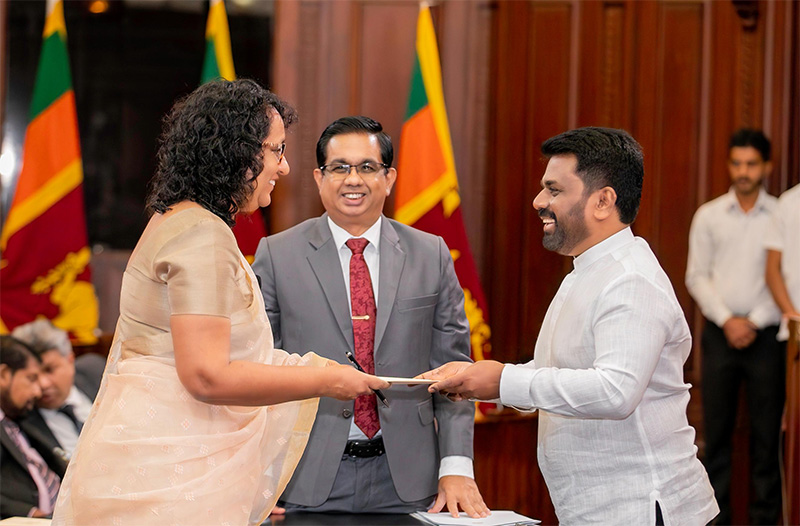
* One-time LTTE mouthpiece TNA is no more
* N & E Tamil speaking representation enhanced
* Fresh look at Sarath Fonseka’s performance at 2010 Prez poll in North required
The new government’s main challenge is ensuring the full implementation of the IMF-led post-Aragalaya economic recovery in line with the Economic Transformation Bill approved by the previous government without a vote. Whatever the side-shows, the focus not only of the government but the Parliament should be on preparing the country to resume debt repayment in 2028 or be ready to face the consequences.
By Shamindra Ferdinando
In a way it was a great thing for the country that the National People’s Power (NPP) scored an emphatic victory at the Nov. 14 general election. Now the Janatha Vimukthi Peramuna (JVP)-led NPPers can have no excuses for not being able to fulfill their promises as would have been the case if the preceding September Presidential election outcome was repeated with the combined Opposition having the lion’s share of the vote, which would have left the country with a virtual hung Parliament of no benefit to anyone other than creating a parliamentary stalemate, leading to fresh political chaos.
We will, however, grant the fact they have a very tall order to fulfill after the previous governments having virtually signed away our sovereignty with the deals they had inked during their tenures.
But we do have a nagging suspicion about someone working in not so mysterious ways against us behind the scene, after what the former US Secretary of State, John Kerry, publicly stated not too long after the defeat of President Mahinda Rajapaksa at the 2015 presidential election when he crowed to the whole world how they had spent several hundred million dollars for regime change operations at the time in several countries, including Sri Lanka. Then we also know since then how a US engineered coup ousted the popularly elected Prime Minister of Pakistan Imran Khan by way of parliamentary and military shenanigans, and then the more publicised way they ousted Prime Minister Sheikh Hasina of Bangladesh and then virtually ruined that country as was the case during the Aragalaya here in 2022 to oust the legally elected President, with a wide mandate, Gotabaya Rajapaksa.
The NPP has accomplished the impossible, even in the North, in the form of securing the Jaffna electoral district at the recently concluded parliamentary election. The NPP obtained three seats, nothing but a historic watershed.
The ruling party also won the Vanni electoral district, the scene of some of the bloodiest fighting during the Eelam War IV (Aug 2006-May 2009). Securing Jaffna and Vanni consisting of Vavuniya, Kilinochchi and Mullaitivu administrative districts, is as difficult as eradicating the conventional fighting capability of the Liberation Tigers of Tamil Eelam (LTTE). The NPP won two seats in the Vanni.
The final phase of the ground offensive was conducted in a corner of the Vanni electorate where LTTE leader Velupillai Prabhakaran met his maker.
The NPP secured two seats in Trincomalee and one in the Batticaloa districts, whereas Digamadulla gave President Anura Kumara Dissanayake’s party four more seats. Altogether 12 out of 29 parliamentary seats available in the five above-mentioned electoral districts ended up with the NPP.
The NPP delivered the stunning blow to those who still pursued separatist agenda, regardless of the LTTE’s demise over 15 years ago. The combined armed forces brought the war to a successful conclusion in May 2009.
The Illankai Tamil Arasu Kadchi (ITAK)-led Tamil National Alliance (TNA) that dominated the Northern and Eastern provinces since 2001 hadn’t been in the fray at the 2024 general election. The TNA that had been in the grip of the LTTE, during 2004-2009, disintegrated 15 years after the end of war, with the ITAK unceremoniously ending the partnership. Ex-TNA members, EPRLF, TELO and PLOTE contested the general election under the ticket of Democratic Tamil National Alliance (DTNA).
The ITAK obtained seven seats (Batticaloa three, Jaffna one, Vanni one, Digamadulla one, Trincomalee one) whereas DTNA won just one (Vanni one). It would be pertinent to mention that ITAK and DTNA fielded a common list for the Trincomalee district to ensure a split in the Tamil vote wouldn’t cost the community much valued representation therein. ITAK Trincomalee leader Kathiravelu Shanmugam Kugathasan, who replaced R. Sampanthan in Parliament at the last Parliament, won that seat.
In addition to the seven elected, the ITAK that contested under the ‘House’ symbol won one National List slot. Ahila Ilankai Tamil Congress (AITC) was the only other party to secure a seat (Jaffna/ Gajendrakumar Ponnambalam) while Independent Group 17 (Jaffna/ Ramanathan Archuna) won one. Altogether Tamil political parties obtained 11 seats, one less than the NPP.
M.A. Sumanthiran (ITAK/Jaffna), Dharmalingham Siddharthan (DTNA/Jaffna) and Sashikala Nadarajah (DTNA/Jaffna), widow of slain ITAK MP Nadarajah Raviraj were some of the big losers. In the east, one-time Chief Minister of the Eastern Province Sivanesathurai Chandrakanthan alias Pilleyan, formerly of the LTTE, failed to retain his Batticaloa district seat. Former LTTE field commander and ex-lawmaker Vinayagamoorthy Muralitharan aka Karuna Amman made an unsuccessful bid to re-enter Parliament also from the Batticaloa district.
In the previous Parliament, there had been 16 MPs representing five Tamil political parties (ITAK, AITC Eelam People’s Democratic Party [EPDP], Tamil Makkal Viduthalai Pulikal [TMVP] and Tamil Makkal Thesiya Kuttani [TMTK]. Last week’s poll eliminated EPDP, TMVP and TMTK while new entrant NPP created political history by winning 11 seats.
In spite of the humiliating setback suffered by those who had been previously in Parliament, the NPP tally has increased the total strength of the Tamil-speaking group representing N & E in Parliament. Perhaps, the successful formation of NPP’s Tamil-speaking wing may influence other political parties to re-examine their overall political strategy. They may not have any other alternative as failure to do so can further weaken their position at the forthcoming Provincial Council and Local Government polls. PC and LG polls are expected to be held next year.
Shanakiyan Rasamanickam, who re-entered Parliament with a convincing win in Batticaloa, consolidated his position, within the party and the district, due to ITAK’s admirable performance there. If not for three Batticaloa seats, ITAK aka Federal Party would have been in an utterly embarrassing position. Batticaloa electoral district is the only one that the NPP couldn’t win. Therefore, the outspoken Rasamanickam can be really happy to have thwarted the NPP in the eastern district.
Now to bury the hatchet between the two or, more correctly, the three literally warring communities here, NPP will have to think out of the box to find a solution that may be by way of sharing power at the centre rather than the periphery, as was successfully done under the Donoughmore Constitution.
Accountability issues
At the presidential election held in Sept. the NPP couldn’t win at least one electorate in the North but did so well several weeks later, it could win Jaffna and Vanni electorates. If not for that sterling performance, the NPP couldn’t have secured an unprecedented 2/3 majority. President AKD should be ever grateful to the northern and eastern electorates for facilitating a 2/3 majority.
Since the introduction of the proportional representation at the 1989 Parliamentary election, no party succeeded in securing a 2/3 though many alleged the Rajapaksas abused such huge mandates. They were, of course, referring to the UPFA securing 144 seats and 145 seats at the 2010 and 2020 general elections, respectively. For a simple majority, the winning party needs 113 seats while 2/3 means 150 seats.
Against the backdrop of NPP’s victory in the N & E, the new Parliament should review Sri Lanka’s response to post-war accountability issues. Since the eradication of the LTTE, the TNA propagated politically motivated unsubstantiated war crimes allegations, both here and abroad. Finally, the treacherous Yahapalana government (2015-2019) betrayed the war-winning armed forces at the Geneva-based United Nations Human Rights Council (UNHRC) in Oct 2015. The accountability resolution that had been co-sponsored by the US-led grouping and Sri Lanka was meant to pave the way for a new Constitution aimed at doing away with the country’s unitary status.
Interestingly, the war-winning Army Commander, Sarath Fonseka, who had been promoted to the rank of Field Marshal, in March 2015, served in that Yahapalana Cabinet, chaired by President Maithripala Sirisena. The role played by the then Premier Ranil Wickremesinghe and the late Foreign Minister Mangala Samaraweera in that despicable act is in the public domain. The failure on the part of Fonseka, who served President Sirisena’s Cabinet to vigorously oppose the government move is still a mystery.
The writer repeatedly discussed the failure on the part of Parliament and urged concerned political parties to raise the Yahapalana-TNA Geneva operation after the same lot fielded Fonseka as the common presidential candidate in 2010. Although Fonseka lost the contest by a massive 1.8 mn votes to war-winning President Mahinda Rajapaksa, he handsomely won the Jaffna, Vanni, Trincomalee, Batticaloa and Digamadulla electoral districts at the same election.
The NPP’s excellent showing in the N & E at the recently concluded general election should be examined taking Fonseka winning the former war zones 14 years ago.
Having alleged Fonseka’s Army of war crimes throughout the northern campaign, the TNA had no qualms in backing the Sinha Regiment veteran. Unfortunately, political parties represented in Parliament never bothered to raise TNA’s duplicity. Instead, all of them shamelessly and brazenly played politics with the issue, seeking petty political advantage at the expense of the armed forces. There hadn’t been a single instance of a war-winning country betraying its armed forces hitherto anywhere in the world. It was only the Maithripala Sirisena/Ranil Wickremesinghe govt. that achieved that dastardly act.
The JVP, though being not part of the Yahapalana Cabinet, never opposed the government’s move against the armed forces. However, the NPP’s victory in the North, perhaps would give an opportunity for President AKD, who is also the Defence Minister and Commander-in-Chief of the armed forces, to address the issue at hand afresh. President AKD retained the Defence portfolio when the new Cabinet of Ministers was sworn in last Monday.
The developing situation in the North may help post-war national reconciliation efforts. Successive governments deliberately allowed further deterioration of relations between the two communities by not taking apt remedial measures. Those who propagated lies were allowed to do so much to the disappointment of the armed forces. Parliament turned a blind eye even when the US and Australia et al denied visas to retired and serving officers and US imposed travel ban on the then Army Commander Gen. Shavendra Silva, the incumbent Chief of Defence Staff (CDS). Maj. General Chagie Gallage, now retired, is another victim of external reprisals.
Maaveerar Naal (Great Heroes’ day)
The Tamil Diaspora must have been quite surprised by the outcome of the general election. Some interested parties played down the importance of NPP victory in the North on the basis of low turnout of voters. It would be interesting to observe how the Diaspora and political parties here mark this year’s Maaveerar Naal. Commencing 1991, the LTTE used to celebrate Nov. 21-27 week as Great Heroes Week. During the period the group wielded power, the weeklong celebrations and activities received even international media attention.
This year, Maaveerar week is scheduled to commence on Nov 21 (tomorrow), the day the 10th Parliament meets. What would those elected from the NPP, ITAK and other parties do this year? Would interested parties seek to cause some unnecessary commotion in a bid to embarrass the government. Let us hope the government would handle the situation cautiously as opportunistic elements on both sides seek to exploit the developments. ITAK’s Sivagnanam Shritharan paid tribute to fallen Maaveerar at Kanagapuram, Kilinochchi.
The NPP’s unexpected victory in the north may compel not only Tamil Diaspora but Western countries, particularly Canada, to review their position.
Canada declared May 18 as Tamil Genocide Remembrance Day as Premier Justin Trudeau’s government sought to appease Canadian voters of Sri Lankan origin. Canada cannot under any circumstances ignore the Tamil vote received by the NPP as people discarded unsubstantiated war crimes allegations directed at the government, for the second time. Had the northern electorate believed the Army wantonly killed civilians on the Vanni east front in 2009, as alleged by the UN, they wouldn’t have voted for Fonseka. Perhaps, the people wanted the government to bring the war to an end at any cost. Having waged two terror campaigns in 1971 and 1987-1990, the JVP should be able to comprehend the need and the responsibility on the part of the government of the day to take whatever measures necessary to deal with the challenge.
The NPP was formed in 2019 just months ahead of the presidential election as the JVP realized it couldn’t push ahead on its own but needed wider public support. The NPP achieved that with ease within six years.
In August 2006, the then President Mahinda Rajapaksa went ahead with an-all-out campaign against the LTTE after failing to convince them to negotiate for a final settlement. President Rajapaksa had no option but to go on the offensive after the failed LTTE assassination attempts on the then Army Commander Lt. Gen. Fonseka (April 2006) and then Defence Secretary Gotabaya Rajapaksa (Oct. 2006). The TNA remained committed to the LTTE’s murderous cause until the very end.
A matter for serious concern
An unbelievably large number of voters skipped the general election. All political parties, including the NPP, should be concerned over the unprecedented deterioration of voter interest, especially after a thrilling presidential election brought AKD to power just six weeks ago. A substantial increase for the NPP from 5,634,915 votes (42.31 %) at the presidential to 6,863,186 (61.56%) at the general election just weeks later shouldn’t be allowed to divert attention to the massive drop in public interest. Well over half a million rejected votes, too, must worry all.
The NPP won 159 seats, including 18 National List slots, nine more than required for a 2/3 majority. At the presidential election 3,520,438 voters refrained from exercising their franchise. But that figure increased to 5,325,108 at the general election while the number of rejected votes, too, recorded a significant increase. According to the Election Commission, at the presidential poll, the number of rejected votes was 300,300 while the general election recorded 667,240 rejected votes.
What really caused such an increase in the number of rejected votes was when the number of polled votes dropped from 13,619,916 votes (79.46%) to 11,815,246 (68.93%)? In other words of the 17,140,354 people eligible to vote, a staggering percentage decided not to. Voter apathy is not healthy. Not healthy at all.
A rethinking on the part of the SJB and New Democratic Front (NDF/consisted of former SLPP lawmakers and UNP) is necessary as they couldn’t at least retain the number of votes received at the presidential election. SJB that polled 4,363,035 votes (32.76 %) at the presidential poll could muster only 1,968,716 (17.66%) at the general election, while NDF could secure 500,835 (4.49%) having polled 2,299,767 (17.27%) just weeks ago. The SJB and NDF ended up with 40 seats (including five NL slots) and five seats (including 2two NL slots) while the SLPP that won 145 seats at the 2020 general election had to be satisfied with three seats, including one NL slot.
Both Sajith Premadasa and Ranil Wickremesinghe should seek remedial measures before the EC announced PC and LG polls. Perhaps, divided groups have to unite under one banner either under SJB or UNP or face annihilation at the PC and LG polls. For Premadasa and Wickremesinghe time seemed to have run out.
The SLPP obtained 350,429 votes (3.14%) at the general election up from 342,781 (2.57 %) at the presidential election. For the SLPP a rapid recovery process will never be possible as its only NL member and leader of the minute group Namal Rajapaksa is likely to be the target of corruption investigations. The SLPP group consists of Namal Rajapaksa, newcomer Chanaka Sampath (Galle) and D.V. Chanaka (Hambantota).
Fifteen political parties represented the last Parliament. They were SLPP (145), SJB (54), ITAK (10), NPP (03), EPDP (02), AITC (02), TMVP (01), SLFP (01), MNA (01), TMTK (01) TMTK, ACMC (01), NC (01), SLMC (01), UNP (01) and OPPP (01). The new Parliament will be represented by 13 political parties and one independent group – namely NPP 159, SJB 40, ITAK 08, NDF 05, SLPP 03, SLMC 03, Sarvajana Balaya (NL), UNP (01), DTNA (01), ACTC (01), ACMC (01), Jaffna Ind. Group 157 (01) and SLLP (01).
Midweek Review
‘Ramayanizing’ Sri Lanka by Courtesy of SriLankan Airlines

 (The author is on X as @sasmester)
(The author is on X as @sasmester)
SriLankan Airlines’ five-minute commercial promoting the so-called ‘Ramayana Trail’ in Sri Lanka is being accepted very naively as an enticing and heartwarming advertisement by Sri Lankan and Indian viewers across social media. Predictably, the video has also gone viral. It shows a young child being educated about aspects of the Ramayana legend by his grandmother, while zooming in on locations in Sri Lanka where local mythology has made associations with some narratives of the Ramayana. Beyond the rave reviews of the commercial in Sri Lanka and India, an astute observer would in fact see it as a very problematic rendition for one simple reason. That is, when viewed from the perspective that it is paid for by SriLankan Airlines, a government entity funded by local taxpayers, what is said and promoted, in effect, would be through the voice of the state and the government. Therefore, for instance, when the granny tells the child, “all the places in Ramayana are real. Today, we know Lanka as Sri Lanka”, in one careless and ill-thought-out fell swoop, SriLankan Airlines has given credence to belief as evidence, myth as history, fiction as fact, asserting Ramayana’s Lanka as present-day Sri Lanka when numerous Indian renditions of the story locate parts of Ravana’s Lanka well within contemporary India.
Admittedly, the commercial will certainly attract Indian tourists and pilgrims, particularly from the northern parts of the country. The question that comes to mind however is whether this is the only way to promote the trail? Many of my friends have already made the trip without the nudging of the new advert. The advert also begs the question, whether local sensitivities and cultural meanings linked to the Sanskrit epic were ever considered when it was conceptualised, or at any point even after in the process. More importantly, who gave the final seal of approval?
The hegemonic narrative in the commercial is what one might call a ‘North Indian Brahminic’ approach to the Ramayana, which erases other versions of the epic including the Ravana-centric myths in Sri Lanka itself. Unfortunately, it is this hegemonic narrative that has been making the rounds for some time in India with Rama as its protagonist and Ravana as the absolute villain, the all-evil-encompassing antagonist. In this rendition, it is no longer simply an ancient epic or a story of innocence and faith, but a contemporary political narrative with considerable cultural power, authority and reach, performed and used by the state itself. This narrative feeds directly and indirectly into the somewhat imperialist designs of certain contemporary Indian political forces so aptly encapsulated in the hegemonic political concept of Akhand Bharat. However, in real life, understandings of the Ramayana have never been this simple or linear.
The title of Prof A.K. Ramanujan’s seminal essay, ‘Three Hundred Ramayanas: Five Examples and Three Thoughts on Translation’ offers a clear indication into the many versions of the Ramayana and the complex narrative traditions of both India and lands beyond where aspects of the epic have become part of local myths, folktales or performance traditions. Interestingly, Prof Ramanujan’s essay was dropped from the Bachelor of Arts in History (Honours) degree programme at Delhi University in 2011 amidst considerable agitations lead by Akhil Bharatiya Vidyarthi Parishad, a right-wing students’ organization, precisely because its contents complicate the way in which the political narrative that is the Ramayana today is presented.
It is truly unfortunate that the narrative given prominence in the Sri Lankan Airlines advert stems from this dominant, parochialized and utterly politicized version of the Ramayana which sweepingly demonizes Ravana. This broad-brush demonization reaches its peak in India during Dussehra, the festival during which effigies of Ravana are burnt to symbolize the vanquishing of evil (Ravana) by good (Rama). However, interestingly, in many of India’s tribal areas, the narrative is closer to that in Sri Lanka, where Ravana is seen as a hero, and importantly as a source of knowledge and ethics. In 2017, in the Katol area in the State of Maharashtra, tribal people forced the local administration to stop the burning of Ravana effigies during Dussehra. In Nashik, also in Maharashtra, tribal folklore suggests that the area was part of Ravana’s kingdom and was governed by his sister Surpanakha along with her husband. This understanding of Ravana’s kingdom is nowhere near Sri Lanka as promoted by SriLankan Airlines. In some tribal Gond villages in Maharashtra, Ravana is worshiped as a god, clearly evident during Dussehra. He is also worshiped in many other locations including, Mandsaur and Ravangram in Madhya Pradesh; Bisrakh in Uttar Pradesh; Kangra in Himachal Pradesh; Mandya and Kolar in Karnataka, and Jodhpur in Rajasthan. Similar practices are seen in the tribal areas of Chhattisgarh, Jharkhand and West Bengal as well.
In Tamil Nadu in India’s south, there are many people who align themselves with ‘Dravidian’ ideologies, promoting Ravana as a politico-cultural icon. One source of motivation for this stems from the manner in which Ravana is eulogised for his valour in Kambaramayanam – the Tamil version of the Ramayana – even though here, too, the main premise of the hegemonic account is maintained. The more obvious source for this reverence is Ravana Kaaviyam written by Pulavar Kuzhandhai and published in 1946. It is a 20th century attempt to deconstruct the Ramayana based on the argument that the mainstream Ramayana was an attempt to establish the supremacy of the ‘Aryan race’ who lived in northern India, over the ‘Dravidians’ in the south. Here, Ravana is seen as a ‘Dravidian’ king, and in essence very similar to the Sinhala renditions of Ravana. In both these popular Sinhala and Tamil versions, he is presented as a noble king, epitomising justice, courage and compassion, and also a wise person and scholar. While categories such as ‘Dravidian’ and ‘Aryan’ as ethno-cultural references as opposed to linguistic references are not part of my academic vocabulary, the attempted deconstruction is nevertheless interesting as it also offers a glimpse into the manner in which 20th and 21st century hegemonic North Indian politics are understood by some sections in the country’s south.
What is evident is that a counterculture movement is currently mobilising tribal and Dalit communities in several Indian states such as the above to vindicate Ravana and ‘rescue’ him from the negative light in which he has been portrayed in the current dominant version of the Ramayana, the one SriLankan Airlines has blindly based their commercial on. Due to this blindness, these interesting and telling complexities and intriguing political and cultural references have no resonance whatsoever in the SriLankan Airlines advert.
I come again to the question posed at the beginning of this essay: is this the only way to do such a promotion funded by the Sri Lankan government? Cannot the state-funded national carrier attract Indian tourists and pilgrims by presenting the places the local tourism industry and Indian tour and pilgrimage operators want these travellers to visit by offering the local interpretation? After all, Sri Lanka does not have a performance tradition of the Ramayana and hardly any concrete memories of the epic and its numerous episodes as a specific text. Instead, fragments of these exist scattered on the landscape throughout the island as places where specific incidents related to the Ramayana had supposedly happened. These manifest through several local folk tales and myths where Ravana is ever present as a local hero and Rama is virtually absent except when contextually required. Moreover, some of these places refer to many other stories too, which have been historically more prominent locally than the Ramayana-related narratives. However, right now, the Ramayana ‘stories’ are given considerable local and national prominence as a rational economic decision taken by people in these areas in the interest of tourism which translates into simple commercial gain. This is understandable.
The question is, what prevented SriLankan Airlines from beginning its advert with the famed flying machine of Ravana known in Sinhala as dandu monaraya (and in India as Pushpaka Viman), often referred to in influential local interpretations as the first of its kind, and predating the Wright Brothers’ invention? Is it a lamentable lack of imagination and creativity, or sheer ignorance? After all, the logo of Air Lanka, the predecessor to SriLankan Airlines, found its genesis in this story, which continues to date in a different form. This way, potential tourists could have been shown the same locations referred to in the current advert, but viewed from the sky, as if one were flying in the dandu monaraya like Ravana may have done in mythical times. This would also be very similar to the way ancient Sri Lankan poets of the sandesha tradition described local landscapes and built environments from the point of view of a bird in flight taking a message to a king, a Buddhist monk or some other such personality. Salalihini Sandeshaya and Hansa Sandeshaya written in the 15th century during the Kotte Period come to mind.
In this manner, the core places in the ‘Ramayana Trail’ could have been flagged for tourist and pilgrim interest while maintaining a distinct sense of local culture and identity that SriLankan Airlines should ideally be marketing. This is not to make Indian tourists and pilgrims cast aside their own beliefs, narratives and interpretations when visiting Sri Lanka. That is their right and not in any doubt. The crux of the matter is, why would SriLankan Airlines be so north Indian and Brahminic, and willingly succumb to the dominant and exclusivist version of the Ramayana promoted by the Indian state and many ordinary people to the exclusion of all other narratives in India itself? By doing so, SriLankan Airlines is taking itself, the government, the state and by extension all of us Sri Lankans, right into the bosom of the Indian state’s cultural and political colonialism typified by the concept of ‘Akhand Bharat’ as noted earlier. If picked up by opposition forces in the politically polarised Sri Lankan society, the advertisement can become a political statement, which has the potential to create needless rifts within Sri Lanka itself.
But then again, one cannot expect these complexities to be understood by the decision makers at SriLankan Airlines who obviously are far removed from the local cultural terrain as well as existing cultural hegemonism emanating from across the Palk Strait. The national carrier, in its haste to soar, as well as absence of foresight and lack of enlightenment of local culture has imprisoned Sri Lanka in a hegemonic North Indian politico-cultural narrative. This is also a sign of lacking national pride despite constant and oftentimes annoying rhetoric. One can only hope, the Sri Lankan government will revisit how this was done in the first place and ensure this kind of culturally crude reductionism of our own traditions and folklore does not take place in the future in state-sponsored activities carried out with public funds.
I cannot but be reminded of a quote by Voltaire when reflecting on the manner in which politics of this kind flow, emerge, and reemerge in Sri Lanka while nothing is ever learned: “It is difficult to free fools from the chains they revere.”
Midweek Review
Lone Voice of Reason
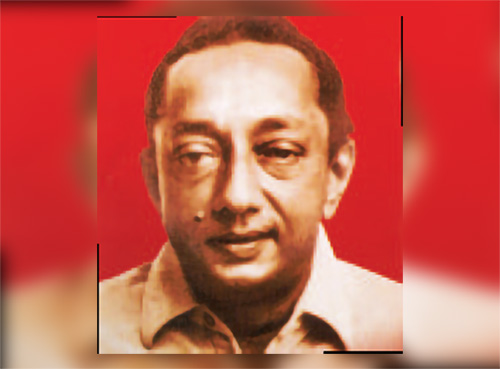
By Lynn Ockersz
There’s this ‘narrative’,
In the ‘Isle of Smug Smiles’,
That the time’s ripe,
To craft the epitaph,
Of the political opposition,
Now that the restive House,
By the idyllic waterway,
Is in the grip of a single party,
In all too familiar history,
But there’s a glowing example,
From the distant eighties,
When Sarath Muththetuwegama,
Lone Member of the CPSL,
Won the admiration of the country,
Through his inspiring speeches,
Clinching the timeless point,
That Quality is superior to Quantity.
-
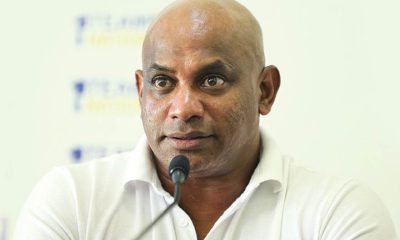
 Sports3 days ago
Sports3 days agoPathum will become world’s best batter, says Jayasuriya
-
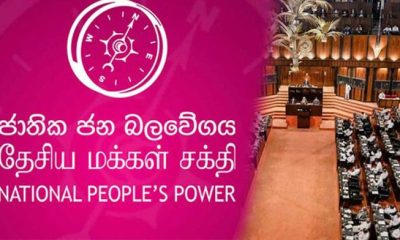
 News7 days ago
News7 days agoNPP appoints two defeated candidates as NL MPs
-
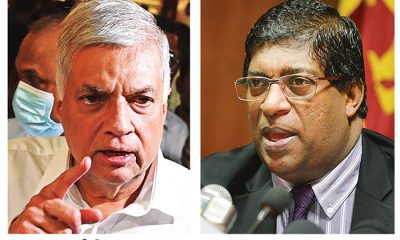
 News6 days ago
News6 days ago‘Gas Cylinder’ explodes; Ranil flays NDF Secy. for submitting Ravi’s name
-

 Midweek Review5 days ago
Midweek Review5 days ago‘Ramayanizing’ Sri Lanka by Courtesy of SriLankan Airlines
-
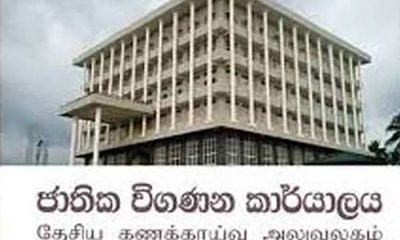
 News2 days ago
News2 days agoAbout 1,000 permits issued to SL migrant workers for electric vehicle imports misused
-
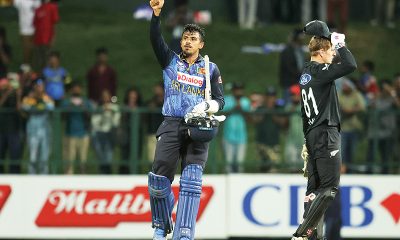
 Sports6 days ago
Sports6 days agoMaking batting compulsory for bowlers has worked – Theekshana
-

 Sports4 days ago
Sports4 days agoSri Lanka’s cricket revival continues
-
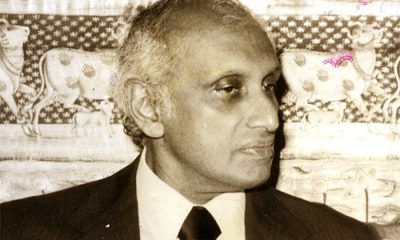
 Features5 days ago
Features5 days agoShould we go back to build another Southern Order?











